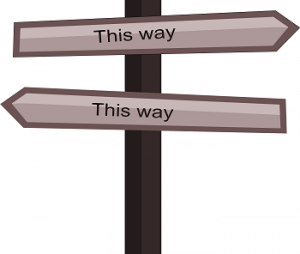 We all know the importance of having a blog: it instills greater trust in your audience while allowing for a deeper, more personal connection. But what is the difference between a blog and standard website? They are both essentially “websites” with their own domain name, so what distinguishes one from the other?
We all know the importance of having a blog: it instills greater trust in your audience while allowing for a deeper, more personal connection. But what is the difference between a blog and standard website? They are both essentially “websites” with their own domain name, so what distinguishes one from the other?
Navigation Structure
While there are always exceptions to this rule, most blogs are designed with a special navigation structure consisting of categories, tags and/or archives. When a user first lands on the blog’s homepage, he or she can choose a category in which posts, pages, or bottom-level categories are contained. Standard websites, on the hand other, don’t have a specific format for navigation. Some of them may use similar categories, but others may avoid them altogether.
Author
Blogs place an emphasis on the author, often revealing the author’s name and photo at the bottom of each post or page. This is done to create a deeper connection with the end user, as it shows the user exactly who wrote the content. Standard websites may or may not feature the author’s name and photo.
Content
Another striking difference between blogs and standard websites is the content. You’ll notice that most blogs feature time-sensitive news-style content (sometimes mixed with evergreen content), whereas standard websites are comprised mostly of evergreen content. Google News is an invaluable source of topic and content ideas for bloggers, as it’s updated with newsworthy announcements within seconds of them being posted. If you’re struggling to find a news-style topic for your blog, head over to http://www.news.google.com, enter a keyword that’s related to your blog’s niche, and it will reveal recent stories containing that keyword.
Post Date
With blogs, the date on which the post or page was published is usually displayed. This is beneficial, as it helps readers locate and identify time-sensitive information. While some standard websites may also display the post date of their content, most do not.
Visitor Comments
The differences between blogs and standard websites don’t end there. Blogs typically allow visitors to submit comments on posts and pages, whereas standard websites do not. Enabling visitor comments is a great way to boost engagement while adding fresh new content to your blog. Whenever a visitor leaves a comment, it adds new content to your blog — content that search engines love. Of course, you can expect to receive some spam comments with this feature enabled, but the benefits of visitor commenting greatly outweigh the cons.
Content Management Systems
Blogs are often created with special blogger-friendly content management systems (CMS), such as WordPress. These platforms have been optimized for use with blogs, as they feature many built-in elements like visitor commenting, post/page scheduling, authors, and more.
Have anything else that you would like to add to this post? Let us know in the comments section below!


A blog is a great way to connect with your readers. I see a lot of businesses failing to use them appropriately though.
When implemented properly, a blog is a perfect compliment to a website. The website provides basic information and the blog engages the visitor.
I’ve recently added a blog and the results have been great. I was initially hesitant but have gotten a ton of positive feedback on it.